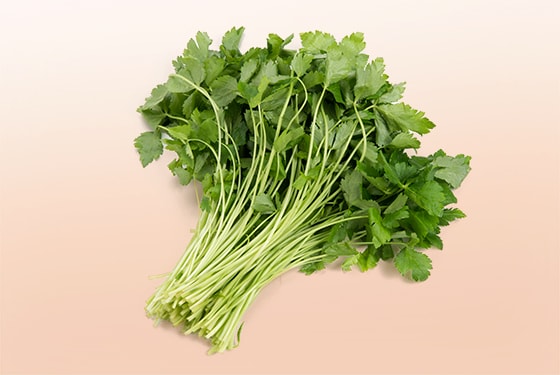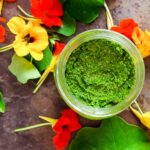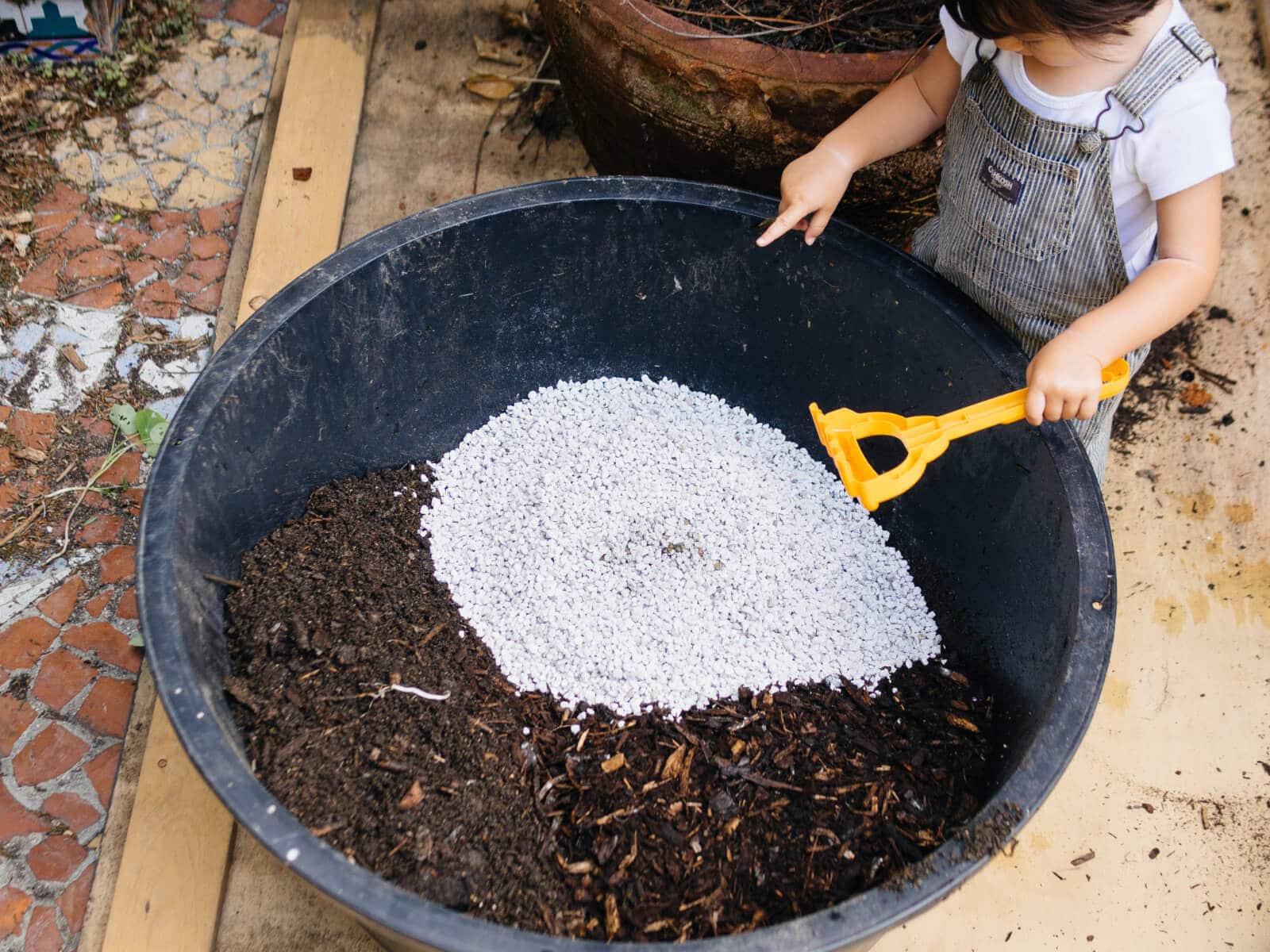Mitsuba, commonly known as Japanese parsley, is a unique culinary herb that offers a delicate blend of flavors and a range of uses in the kitchen. With a rich history rooted in the traditions of Japan, China, and Korea, this herb is more than just a garnishing green – it’s an emblem of cultural significance.
In this exploration of Mitsuba: The Japanese Parsley, we will delve into the herb’s characteristics and uses, highlight its health benefits, and offer tips on how to grow it at home. Whether you’re a seasoned chef or a curious foodie, learning about mitsuba is sure to enrich your culinary repertoire.
What is mitsuba?
Mitsuba, or Cryptotaenia japonica, part of the Apiaceae family, stands out in the world of herbs with its distinctive three-leafed sprigs and a nuanced profile that catches the palate by surprise. Despite its visual similarity to flat-leaf parsley, mitsuba offers a unique flavor that is not easily replicated.
Thriving in moist, shady environments, this perennial herb can be both wild-harvested and cultivated in gardens. Its versatility extends beyond the kitchen, as its lush foliage is also used in ornamental displays during special celebrations in Japan.
As an essential ingredient in Japanese cuisine, mitsuba is often enjoyed fresh, with its leaves adding a crisp texture and a refreshing taste to a variety of dishes. It’s a testament to the herb’s adaptability and the importance of preserving its delicate flavor.
Commonly referred to as Japanese wild parsley, the green’s popularity has crossed borders, finding a special place in the hearts and kitchens of culinary enthusiasts around the world.
How to use mitsuba: The Japanese parsley?
Mitsuba’s charm lies in its ability to enhance dishes without overpowering them. Its leaves, finely chopped, are a classic embellishment for soups, salads, and stir-fries, where they not only add color but also impart a subtle, refreshing taste.
If you’re wondering how to cook with mitsuba, it’s important to remember that heat can diminish its flavor. As such, incorporating it towards the end of the cooking process or using it raw in dishes like sushi and sashimi is ideal.
With its mild and balanced flavor, mitsuba can be used in a variety of recipes. It is particularly well-suited for egg dishes, where it can complement without overwhelming, and it’s a natural fit for mitsuba recipes for salads and soups.
What are the benefits of mitsuba: The Japanese parsley?
Mitsuba isn’t just a feast for the eyes and taste buds; it’s also packed with health benefits. Rich in essential vitamins and minerals, it contributes to a well-balanced diet, supporting overall well-being.
Regular consumption of mitsuba can aid in digestion, thanks to its dietary fiber content. Its vitamins, such as vitamin C, bolster the immune system, providing a natural defense against common illnesses.
- Antioxidant properties help combat free radicals, reducing the risk of chronic diseases
- Anti-inflammatory effects may alleviate symptoms of various conditions
- Calcium and iron content support bone health and prevent anemia
Where can I buy mitsuba: The Japanese parsley?
For those looking to add this herb to their kitchen, finding mitsuba can be as simple as visiting a local Asian grocery store or specialty market. The herb’s growing popularity means it’s becoming more accessible worldwide.
For the gardening enthusiasts, mitsuba seeds are available through online retailers and garden centers, allowing you to cultivate the plant in your own space.
Whether you’re in a bustling city or a quiet suburb, there are options available to acquire this versatile herb. With a little searching, you can begin incorporating mitsuba into your culinary creations.
What does mitsuba taste like?
The taste of mitsuba is often described as a cross between celery, cilantro, and parsley, with a hint of chervil. It brings a mild yet distinctive flavor to dishes, providing a freshness that can brighten up any recipe.
Its flavor is best experienced when used fresh, as cooking tends to mute its delicate qualities. Thus, many Japanese chefs reserve mitsuba as a final garnish, applying it to dishes just before serving to maximize its aroma and taste.
How to grow mitsuba: The Japanese parsley in your garden?
Growing mitsuba in your garden is a rewarding endeavor that yields fresh herbs at your fingertips. To get started, you’ll need a shady spot with moist soil, as mitsuba thrives in conditions that mimic its natural woodland habitat.
Planting can begin in the spring, and with the right care, you can enjoy harvests throughout the growing season. Regular trimming of the stems encourages bushier growth, providing more leaves to enhance your cooking.
- Choose a location with partial to full shade and rich, well-draining soil
- Sow seeds directly into the ground or start them indoors before transplanting
- Keep the soil consistently moist, but be careful not to overwater
- Harvest stems by cutting them near the base to encourage regrowth
Mitsuba vs. Italian parsley: What are the differences?
While mitsuba and Italian parsley may look similar at a glance, they are distinct in both flavor and botanical classification. Mitsuba’s flavor is more complex and delicate, while Italian parsley provides a more robust, herbaceous note to dishes.
In terms of cultivation, mitsuba prefers shadier conditions compared to Italian parsley’s love for sunlight. Additionally, mitsuba’s trefoil leaves set it apart visually from the flat leaves of its Italian counterpart.
The differences between these two herbs are crucial for chefs and home cooks alike, as they can greatly influence the outcome of a dish. Understanding these nuances ensures that each herb can be used to its full potential.
Mitsuba: The Japanese parsley explained
As we have explored, mitsuba is more than just a simple herb; it’s a cultural symbol, a health booster, and a culinary delight. Its versatility in the kitchen and ease of cultivation make it an excellent addition to any herb garden or recipe collection.
If you’re interested in expanding your culinary horizons, consider growing mitsuba or seeking it out on your next grocery run. You may just discover your new favorite herb.
Related Questions on Mitsuba
What does mitsuba parsley taste like?
Mitsuba parsley offers a unique flavor profile that is a delicate blend of celery, cilantro, and flat-leaf parsley, with a hint of sweetness. Its taste is both refreshing and subtle, providing a light, herby note to dishes without overwhelming other ingredients.
Especially popular in Japanese cuisine, mitsuba is prized for its ability to impart a fresh, clean taste to dishes, whether used as a garnish or as a key component of the recipe.
Is mitsuba the same as parsley?
While mitsuba is often referred to as Japanese parsley, it is not the same as the common parsley used in Western cuisine. Although both herbs belong to the Apiaceae family, mitsuba has distinctive three-part leaves and a flavor profile that sets it apart from other parsley varieties.
Understanding this distinction is important for culinary accuracy and for appreciating the unique qualities that mitsuba brings to the table.
What are the benefits of mitsuba herbs?
Mitsuba herbs are not only flavorful but also nutritionally beneficial. They are rich in vitamins A and C, which support immune function and eye health. Additionally, mitsuba provides dietary fiber, aiding in digestion and promoting a healthy gut.
The antioxidants present in mitsuba help to reduce oxidative stress and inflammation, which can lead to chronic diseases. Incorporating mitsuba into your diet can thus contribute to overall health and wellness.
Is mitsuba the same as cilantro?
Although mitsuba shares some flavor notes with cilantro, they are not the same herb. Mitsuba’s taste is more subtle and lacks the soapy undertone that some people detect in cilantro. Its delicate nature makes it versatile in ways that differ from cilantro’s boldness.
Both herbs have their unique place in culinary traditions, and understanding their differences is key to utilizing them effectively in various dishes.
For visual learners, here’s an informative video featuring mitsuba, also known as Japanese wild parsley, and its uses in the kitchen:
In conclusion, mitsuba is a sophisticated yet accessible herb that can elevate your cooking and enrich your diet with its unique flavor and health properties. From its appearance in traditional Japanese dishes to its use as a garnish in modern cuisine, mitsuba brings a touch of elegance and a wealth of benefits to the table.






